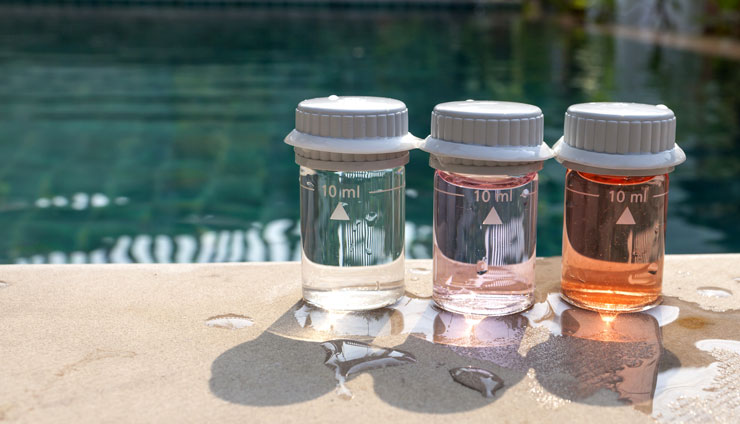Summer is a season when most of us enjoy the outdoors soak up some sun. Sunlight in moderation can be healthy for the skin and for the rest of the body. It activates the skin cells to manufacture vitamin D, which is essential for the synthesis of essential minerals such as magnesium and calcium. Although the sun is good for your skin in small doses, too much of it can lead to skin problems. Here are some dermatological issues you may experience during summer and how to solve them.
Sunburns, Sun Allergy & Melasma
Melasma, sunburns and sun allergy are some issues many people experience during the summer.. Melasma is a condition that predominantly affects women between the ages of 20 and 55. It is characterized by tan, brown or grey-blue patches on the forehead, cheeks and jawline. Its primary cause is exposure to the sun, but genetic and hormonal issues can play a part. Over-the-counter creams can be used to treat melasma, but to prevent flare-ups, you should consider wearing hats and using sunscreen when you’re outdoors.
Sunburn is the result of too much sun exposure. The symptoms are red, painful skin patches that can itch and be hot to the touch. Blisters may also develop. In some cases, sunburns can lead to wrinkles, skin cancer, and dark spots. However, on its own in the immediate term, sunburn is not a serious condition and it can resolve on its own in a few days. Of course, you must stay away from the hot sun. Over-the-counter painkillers and creams may be used to relieve the pain and itch.
Sun allergy is a condition where a rash forms on the skin on the chest and arms after hours of sun exposure. You can use aloe vera to treat the rash and painkillers for the discomfort. To prevent the effects of sun allergy, it is essential to use preventive measures like applying sunscreen, and wearing hats and protective clothing.
Heat Rash
This condition commonly occurs in babies. It happens when sweat ducts trap sweat under the skin. This results in rough red spots on the skin or in blisters. A heat rash may not necessarily occur with sun exposure, it can also happen in hot and humid environments, or when a person wears heavy clothes during hot weather.
The rash can heal without treatment after a few days, but keeping the skin cool and well-aerated will speed up the process. Light, breathable clothes will help with treating and preventing heat rash.

Dry, Irritated Skin
Hot and humid conditions can dry up the skin. Also, you may sweat more during summer, leading to dehydration. As the salt deposits in sweat settle on the surface of the skin, it can irritate the skin leading to itching and rashes. Even with moderate temperatures, dry air can irritate the skin. To avoid this, do not stay in the sun for too long and always protect the skin with sunscreen. This will retain skin moisture and leave it feeling hydrated and soft. Also, be sure to drink plenty of water during the summer.
Poison Ivy, Poison Oak & Poison Sumac Rashes
Poison ivy, poison oak and poison sumac are plants that grow in wooded areas. They aren’t really “poisonous,” but their leaves emit an oily substance that causes a rash, blisters and itching when touched. The rash forms on the particular parts of the body that were in contact with the oily substance called urushiol. It can develop 24 hours after contact and last for over three weeks.
If you are around areas where the plants grow, cover up with long clothes. If you are exposed to any one of these plants, use calamine lotion, baking soda or oatmeal to reduce the itching effects the secretion has on the skin. Urushiol can spread from clothes to the skin, or from one part of the skin to another. Wash the contacted body parts and clothes with soapy water.

Folliculitis
Folliculitis is an infection of the hair follicles. It causes a pimple to form at the opening of the follicle, which can itch and be painful. Folliculitis is more common in summer than in the colder months.

To keep it at bay, always wear breathable clothes and change from tight, sweaty clothes after you sweat. Also, avoid too much time in hot tubs and pools when you are not sure of their chlorine levels. Insufficient chlorine levels allow folliculitis because bacteria can thrive. When folliculitis spreads and causes you to develop a fever, you should see a doctor.
Eczema Flare-Ups
Heat and sweat are some of the irritants that can lead to eczema flare-ups. Also, dry air can cause a flare-up. People who have a history of eczema are more susceptible to flare ups during summer. The symptoms include itching, red skin patches and bumps.

To control these symptoms, take regular showers to cool the body, wear loose-fitting clothes and drink a lot of water. Also, do not scratch!
Acne Breakouts
For acne-prone skin, breakouts can be more intense in the summertime. This is as a result of sweating, bacteria buildup and clogged skin pores.
Staying hydrated helps ensure that dirt and bacteria do not build up under the skin. As a result, the pores do not clog as much. Also, use water-based lotions and creams and change clothes including headbands, scarves, hats, and towel regularly. Most non-oily or non-pore clogging products have labels that indicate the same. Note that any item that is in contact with sweat can harbor bacteria that can be transferred back to the body even after showering.
With your skin health, it is always better to be safe than sorry. Most summer skin problems are not serious and resolve on their own or with a little medication, but if you are not sure of the condition or cause, check with your dermatologist at Adult & Pediatric Dermatology by contacting 913-469-1115 today.

